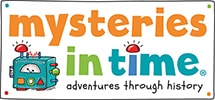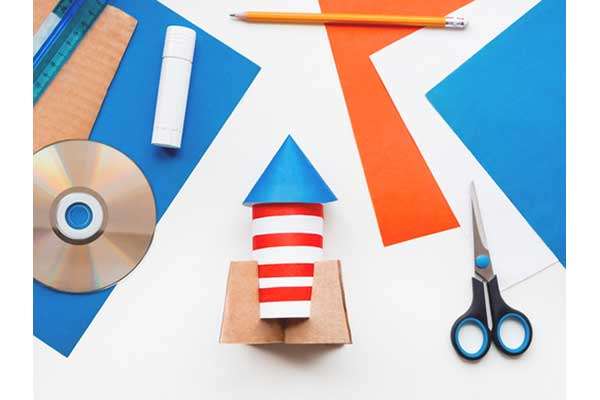These fun space activities for kids will keep your children entertained and educated for hours.
Throughout human history, we’ve been fascinated with the night sky. For ancient civilisations, space was mysterious. To modern civilisations, it represents a great opportunity for adventure, exploration and education. Space is endless — there’s always something to learn.
Our eleventh adventure box transports you to the Mir Space Station. In this box, you learn all about the solar system, the Space Race, gravity and much more.
Below, we’ve outlined 5 fun space activities your kids will love. Be sure to take lots of pictures and share the results with us on social media!
We also have some great Ancient Rome activities your kids will love — check them out today.
1. Draw Chalk Constellations on the Driveway
We’ve studied the stars for thousands of years. They’ve helped us make maps to facilitate navigation and they’ve inspired many legends and stories. The Ancient Greeks knew to sail in particular directions by watching the positions of the stars in the sky.
Your children will probably know that a constellation is a group of stars that make up a pattern in the night’s sky — much like a dot-to-dot picture. For this project, print out a selection of constellations and describe each one. Then ask your child to pick out one of their favourites. Grab some small stones from the garden — you can even paint them gold for extra fun — then go outside to your driveway and lay out the stones to resemble the constellation. Your child can then use chalk to join the stars. Now you have your very own constellation right on your doorstep! The best thing about this project is that the cleanup is minimal — the chalk will wash away easily.
2. Create a Moon with Craters
This is an activity inspired by Gift of Curiosity — a blog with tonnes of great activities that you should check out.
This task is all about the moon, which, as we know, is filled with craters. These craters were formed by large rocks colliding with the moon millions of years ago. Gift of Curiosity recommends making your own moon out moulding clay. Once you have your moon, grab small stones and get your child to ‘crash’ these rocks into the moon, making craters. This will help them to understand why the moon looks the way it does.
Check out our blog post on Ancient China activities for kids!
3. Build a Rocket Using a Plastic Bottle
If you’ve got a few plastic bottles kicking about, this is a great project to use them up. For video instructions, check out eHow’s YouTube Video:
https://www.youtube.com/watch?v=HlZ2yyrooS8
You will need:
- A plastic bottle
- Sellotape
- Scissors
- Coloured paper
This is a simple and fun project that allows for a lot of creativity and decoration. While you decorate, you can put on a documentary about space and let your children soak in the information.
Check out these FREE printables you can download and use today
4. Space Activities for Kids: Make a 3D Solar System
Did you know 65% of the population are visual learners? Visual learners absorb information best when they can see representations on graphs, charts, diagrams or simulations. It’s been shown that kids learn and grow through arts and crafts. What better way to get kids interested in (and knowledgeable about) space than to get them to create a replica of the solar system?
For this project, you’ll need foam balls of different sizes and acrylic paints. First, get your kids to paint the sun and planets the correct colours, using online resources and documentaries for reference. You can even use paper to adhere rings to planets like Saturn.
You can then use a metal coat hanger to hang your planets or you can stick your planets to a piece of coloured cardboard.
5. Tracking the Earth’s Rotation with Shadows
This is a really fun activity that will teach your child about the Earth’s rotation. All you need is:
- A paper plate
- A pencil or stick
- Playdough or Blu Tack
All you need to do is adhere the stick or pencil to the middle of the plate so it is sturdy and will remain straight. Take your plate outside and place it on the ground. If you begin the activity at 10AM, mark the position that the shadow of the pencil casts at this hour. Go back to the plate every few hours and mark the new position of the shadow. If you go out every hour, you’ll notice that the difference between your shadows are equal. This experiment should demonstrate to your kids that, with each hour of the day, we turn away (or rotate away) from the sun, which has an effect on our shadows.
We hope your kids enjoy these space activities! Let us know if you try them out and don’t forget to tag us on social media. We love to see how your projects pan out and we’d love to share the results!
Are you excited to start your adventures through time with Mysteries in Time? Begin with a trip to Ancient Egypt. Select a package (either a Classic Pack or a Bumper Box) and get started. Subscribe today!


